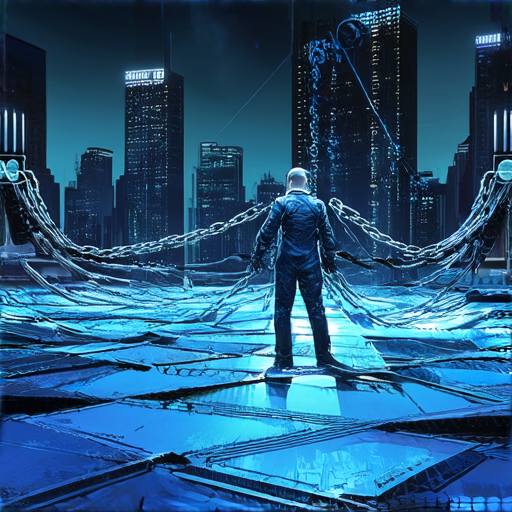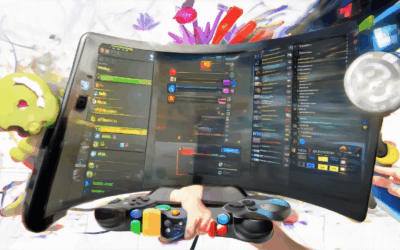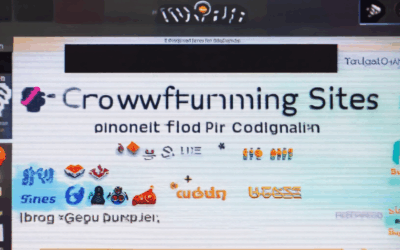When it comes to creating immersive and visually stunning gaming experiences, selecting the right game engine is paramount. With numerous options available, from AAA-grade engines to lightweight alternatives, comparing game engines can feel overwhelming. Whether you’re a seasoned developer or a curious creator, understanding the differences between platforms like Godot, Unity, and Unreal Engine is essential for bringing your vision to life. This guide delves into the key factors and considerations that should influence your decision, offering insights into performance, ease of use, and the features that matter most for your project. By exploring the top contenders and leveraging community insights, this comprehensive analysis will help you navigate the complexities of game engine selection and find the perfect tool for your creative endeavors.

Best Game Engines for Creating Immersive Experiences
When it comes to crafting immersive gaming experiences, selecting the right game engine is crucial. Below is a detailed comparison of the top engines available, along with their unique features and suitability for various project types.
Unity
Unity is a versatile and widely-used engine known for its ease of use and extensive ecosystem. It excels in 3D games, AR/VR applications, and real-time development. Unity supports multiple platforms, including mobile, PC, and consoles, making it a popular choice for indie developers and large studios alike.
- Key Features: Scene editing, physics simulation, lighting, animations, and particle effects.
- Best For: 3D games, VR/AR projects, and cross-platform development.
- Pros: Extensive documentation, active community, and frequent updates.
- Cons: Requires a license for commercial use, learning curve for advanced features.
Unreal Engine
Unreal Engine, developed by Epic Games, is a high-end tool often used in AAA game development. It offers unparalleled graphics and realism, making it ideal for open-world games, cinematic experiences, and large-scale projects. The engine is also widely adopted in industries beyond gaming, such as architecture and automotive simulations.
- Key Features: Physically-based rendering, ray tracing, and procedural content generation.
- Best For: High-fidelity games, VR simulations, and large-scale environments.
- Pros: State-of-the-art visuals, robust physics, and seamless integration with other tools.
- Cons: Complex licensing model, steep learning curve, and high computational requirements.
Blender
Blender is a free, open-source 3D modeling and animation software often used in game development. While it may not be as feature-rich as Unity or Unreal, Blender excels in character modeling, UV unwrapping, and texture mapping. It is particularly popular among indie developers due to its flexibility and affordability.
- Key Features: 3D modeling, UV mapping, rigging, and animation.
- Best For: Character creation, concept art, and 3D asset production.
- Pros: Completely free, extensive add-ons, and customizable workflow.
- Cons: Limited real-time capabilities, requires additional tools for game development.
Godot
Godot is a modern, open-source game engine designed for 2D and 3D games. Known for its speed and simplicity, Godot is a great choice for lightweight projects. It supports multiple platforms and offers a scripting language that simplifies game development.
- Key Features: Scene editing, physics, and scripting.
- Best For: 2D games, lightweight prototypes, and educational projects.
- Pros: Cross-platform, lightweight, and developer-friendly.
- Cons: Limited 3D capabilities compared to Unity or Unreal.
Construct
Construct is a rapid prototyping game engine focused on 2D games. It is highly accessible, with a visual scripting interface that makes it easy for non-programmers to create games. Construct is widely used in education and for quick iterative projects.
- Key Features: Visual scripting, behavior graphs, and asset library.
- Best For: 2D games, educational projects, and rapid prototyping.
- Pros: User-friendly, quick to learn, and powerful.
- Cons: Limited 3D capabilities, fewer customization options.
Choosing the Right Engine
Your choice of game engine depends on your project goals, budget, and technical expertise. Here are some tips to help you decide:
- For Indie Developers: Consider Godot or Construct for lightweight, flexible solutions. Unity is also a great option due to its extensive community and resources.
- For 3D Projects: Unity and Unreal Engine are top choices, offering advanced features and scalability.
- For 2D Projects: Construct and Godot are excellent picks, offering ease of use and customization.
- For Real-Time Performance: Unreal Engine and Unity are best suited for demanding applications requiring cutting-edge visuals and performance.
By evaluating these options and considering your specific needs, you can select the game engine that best aligns with your creative vision and project requirements. Explore more resources on Indie Dev Games for guides, tutorials, and insights to enhance your development journey!
Factors to Consider When Comparing Game Engines
When selecting the right game engine for your project, it’s essential to evaluate various factors that align with your specific needs. Here’s a structured approach to guide your decision-making process:
- Game Type and Platform Compatibility : Assess whether the engine supports the type of game you aim to create, such as 2D vs. 3D, and check its compatibility across platforms like PC, consoles, or mobile devices.
- Cost Considerations : Evaluate the pricing model—free, paid, or subscription-based—and consider any limitations that may come with free versions against the features offered by paid options.
- Core Features : Look into components like physics engines for realistic simulations and animation systems for character movements, as these significantly impact game quality.
- Scripting Capabilities : Determine the available scripting languages, such as C# or UnityScript, to gauge your control over game logic and mechanics.
- Performance Metrics : Focus on aspects like frame rate and load times to ensure smooth gameplay, especially for intensive tasks requiring high performance.
- Community Support and Resources : Investigate the strength of the community, including available tutorials, forums, and assets, to aid in troubleshooting and enhancing your development process.
- Multiplayer Integration : Check if the engine supports native or integrated multiplayer functionalities, crucial for online gaming experiences.
- Tool Integration : Ensure seamless compatibility with other software tools like 3D modeling programs and audio editors to optimize your workflow.
- Future-Proofing : Opt for engines that are actively developed and widely used to ensure long-term support and updates.
- Ease of Use : Prioritize engines with intuitive interfaces and thorough documentation, especially if you’re new to game development.
Additionally, consider competitors like Unity and Unreal Engine, but present them neutrally and professionally. Include links to their resources or comparison guides for readers seeking more options.
For cross-platform support, check which engines support the platforms you’re targeting, ensuring your audience isn’t limited. Also, evaluate customer support and documentation quality for preventing headaches down the line.

Key Factors to Consider When Comparing Game Engines
- Performance: Evaluate how well the engine handles graphics, frame rates, and processing power to ensure smooth gameplay.
- Workflow: Assess the ease of use, intuitive interface, and available tools to streamline your development process.
- Multiplayer Capabilities: Check if the engine supports seamless multiplayer experiences, including server setup and networking protocols.
- Cross-Platform Support: Determine if the engine is compatible with various operating systems and devices for broad reachability.
- Community Support: Look for active communities with forums, tutorials, and mod support to leverage collective knowledge and resources.
- Cost: Compare pricing models, including free, paid, or subscription-based options, along with the features each model provides.
- Support and Documentation: Ensure access to robust customer support, guides, and comprehensive documentation for troubleshooting and learning.
- Future Updates and Maintenance: Investigate the engine’s roadmap and commitment to regular updates to keep your project aligned with advancements.
- Integrations: Check compatibility with third-party tools, libraries, and platforms to enhance functionality and efficiency.
- Learning Curve: Consider the difficulty in mastering the engine’s scripting languages and workflows for your team’s skill level.
- Compatibility with Target Platforms: Ensure the engine supports the platforms you aim to release on, optimizing performance and user experience.
- Monetization Options: Explore built-in features for in-game monetization methods like ads or freemium models to align with your revenue strategy.
- Community-Driven Development: Balance the benefits of open-source contributions with potential challenges regarding stability and official support.

What Are the Key Features to Look For When Comparing Game Engines?
When evaluating game engines, it’s crucial to consider several key factors that align with your project requirements and goals. Here’s a breakdown of the essential features to focus on:
- Scalability : Ensure the engine supports various platforms, including PC, consoles, mobile, and VR, allowing your game to reach a broader audience.
- Visual Quality : Assess the engine’s ability to render high-quality graphics, particularly in real-time. Tools like Unity and Unreal Engine excel in this area.
- Physics Simulation : Check the level of physics support, which is vital for realistic gameplay mechanics. Engines like Havok and Bullet offer robust solutions.
- Animation Capabilities : Evaluate the ease of use and quality of animation tools. Maya and Blender are widely used for creating character animations.
- Multiplayer Support : Determine if the engine offers seamless multiplayer functionality, which is essential for online gaming experiences.
- Modding Options : Consider the availability of modding tools and SDKs to allow players to customize their experience post-launch.
- Scripting Flexibility : Choose an engine with a strong scripting language like C# (Unity), Python (Pygame), or Lua for greater customization.
- Cross-Platform Compatibility : Opt for an engine that ensures smooth operation across different operating systems and hardware.
- Community Support : A vibrant community can provide valuable resources, tutorials, and feedback, enhancing your development process.
By focusing on these features, you can select an engine that best fits your project’s needs, whether you’re developing indie games or large-scale titles. Explore resources like Indie Dev Games for further insights and comparisons.
What Are the Key Factors to Consider When Comparing Game Engines?
When comparing game engines, there are several critical factors to evaluate to determine which one aligns best with your project’s needs. Here’s a breakdown of the most important aspects:
1. Performance
Performance is crucial for ensuring smooth gameplay across various devices. Look for engines that optimize well for different hardware, including mobile, PC, and consoles. Consider frame rate, load times, and memory usage to ensure the engine can handle your project’s demands without lagging.
2. Graphics Capabilities
The visual quality of your game heavily depends on the engine’s graphics capabilities. Evaluate features like rendering engines, texture compression, and effects (e.g., particle systems, shadows). Popular engines like Unity and Unreal Engine offer advanced graphics tools, while others like Godot and Phaser may be more suited for 2D games.
3. Ease of Use
A user-friendly interface and robust set of tools can significantly impact your development timeline. Consider the availability of scripting languages, asset importers, and intuitive UIs. Engines like Unity and cocos2d are known for their ease of use, while others may require more technical expertise.
4. Multiplayer Functionality
If your game requires real-time interactions between players, ensure the engine supports seamless multiplayer functionality. Look for built-in networking APIs and capabilities like client-server architecture. Engines like Unity and Photon Quantum are well-regarded for multiplayer gaming.
5. Platform Compatibility
Your target platforms (PC, mobile, console, web) will influence your choice of engine. Some engines are optimized for specific platforms, while others offer cross-platform development. Check if the engine supports the platforms you need and has good community support for those environments.
6. Community Support and Resources
A strong community behind the engine can provide valuable resources, tutorials, and support. Engage with forums, Discord groups, and developer communities to get insights and assistance when encountering issues. Indie Dev Games is a great resource for finding community-driven content and support.
7. Cost
Consider the licensing model and upfront costs associated with each engine. Some engines are free or have tiered pricing based on project size, while others may charge per seat or require royalties. Balance the cost with the engine’s feature set and long-term benefits.
8. Integration with Essential Tools
Ensure the engine integrates well with other essential tools and services, such as source control (Git), cloud storage, and analytics platforms. Many engines provide plug-ins or extensions to enhance functionality, while others may require custom setups.
Conclusion
Choosing the right game engine involves balancing performance, graphics, ease of use, and community support with your specific project requirements. Whether you’re developing for mobile, PC, or consoles, take the time to evaluate these factors thoroughly before making your decision. Visit [Indie Dev Games](https://indiedevgames.com/) for more insights and resources to help you succeed.
Criteria for Comparing Game Engines
When evaluating game engines, it’s essential to consider several key factors to determine which one aligns best with your project requirements. Here’s a breakdown of the primary criteria:
1. Ease of Use
Consider the user interface and learning curve. An intuitive engine reduces development time and streamlines the creative process.
2. Cost
Evaluate pricing models, including free tiers, subscriptions, or one-time purchases. Assess whether the cost aligns with your budget and project scope.
3. Features
Examine the toolset, including rendering, lighting, animation, physics, and AI capabilities. Determine if the engine meets your specific needs, such as 2D, 3D, or real-time multiplayer.
4. Performance
Test the engine’s capabilities on target platforms, such as desktops, consoles, or mobile devices. Ensure it can handle your project’s graphical demands efficiently.
5. Community Support
A strong community provides resources, tutorials, and feedback loops. Engage with forums, Discord groups, and developer communities to gauge support and collaboration opportunities.
6. Platform Compatibility
Check if the engine supports your intended platforms, including Windows, macOS, Linux, iOS, and Android.
7. Integration with Tools
Assess compatibility with other development tools and assets, such as texture libraries, 3D modeling software, and animation tools.
8. Scalability
Evaluate the engine’s ability to grow with your project. Ensure it supports future enhancements without requiring a complete overhaul.
9. Support and Updates
Investigate the engine’s update frequency and support channels. Regular updates indicate a commitment to ongoing development and improvements.
10. Learning Curve
Balance the engine’s complexity with its benefits. A steep learning curve may be justified if it offers significant advantages, but aim for something manageable for your team’s skill level.
11. Multiplayer Functionality
Test the engine’s multiplayer capabilities, including network synchronization, latency reduction, and server management.
12. Ecosystem and Resources
Explore the availability of assets, scripts, and tools through the engine’s ecosystem. A vibrant community often correlates with extensive support and resources.
13. Cross-Platform Development
Determine if the engine allows for cross-platform development, enabling deployment across multiple platforms with minimal adjustments.
14. Documentation
Review the engine’s documentation and guides. Clear documentation simplifies development and troubleshooting, reducing the learning curve.
15. Longevity and Future-Proofing
Choose an engine with a proven track record and a sustainable future. Established companies with consistent updates are preferable for long-term projects.
16. Licensing Model
Understand the licensing terms, including restrictions on commercial use, modifications, and distribution.
By systematically evaluating these criteria, you can identify the most suitable game engine for your project, balancing performance, ease of use, and long-term viability.
For more insights and comparisons, visit our Game Engine Comparison page to explore detailed analyses and recommendations tailored to your needs.




0 Comments